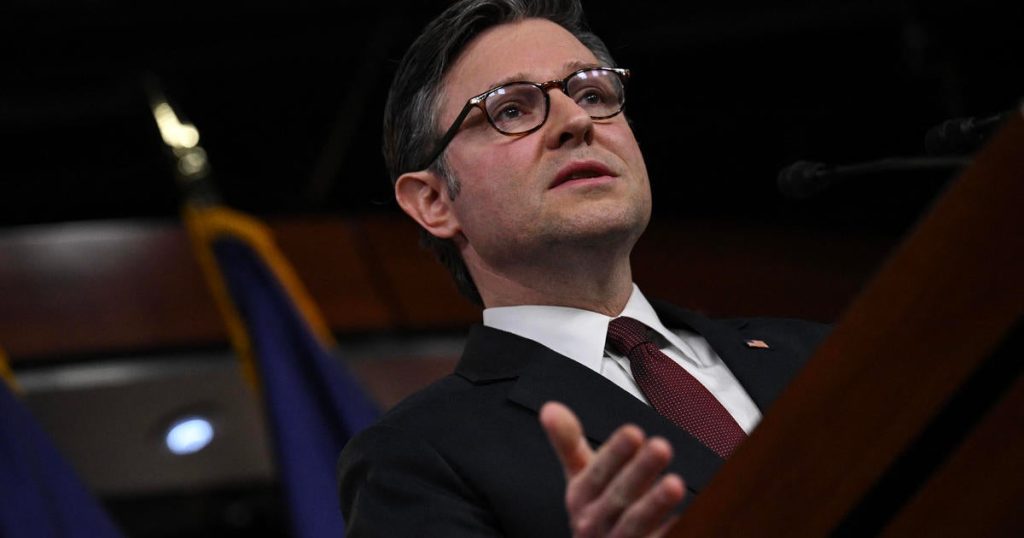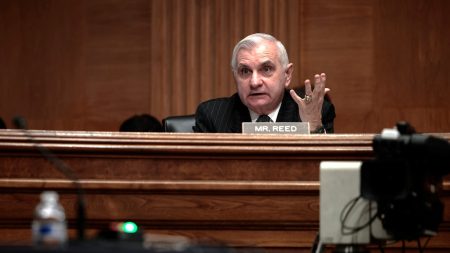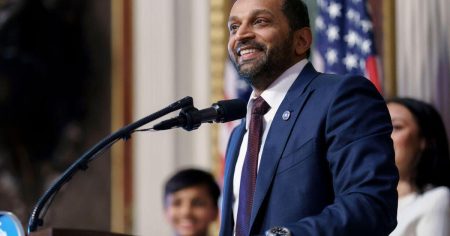The Budget Plan: A Path Forward for President Trump’s Agenda
House Republicans are gearing up to unveil their budget plan later this week, marking a significant step toward advancing President Trump’s agenda. Speaker Mike Johnson emphasized during a news conference on Tuesday that the House is on track to meet its schedule, with the details of the plan expected to be released by Tuesday evening. This budget resolution is the first critical step in the reconciliation process, which Republicans hope will allow them to enact key priorities, such as bolstering border security, extending the 2017 tax cuts, incentivizing domestic manufacturing, and investing in American energy. However, the process has been marred by delays due to intraparty disagreements, particularly over the approach to taxation and spending cuts.
Legislative Strategy: One Bill or Two?
The debate over how to move forward with the budget reconciliation process has exposed divisions within the Republican Party. House Republicans, led by Speaker Johnson, are advocating for a one-bill strategy, which they believe offers the best chance of delivering on President Trump’s campaign promises. Johnson emphasized the difficulties of passing two major bills under the reconciliation process, especially with a razor-thin GOP majority in the House. In contrast, Senate Republicans, led by Sen. Lindsey Graham of South Carolina, have proposed a two-bill approach, arguing that the tax components of the plan are too complex to be addressed in a single piece of legislation. This divergence in strategy has created tension between the two chambers, with Johnson urging the Senate to allow the House to take the lead.
Challenges and Pressure: A Race Against Time
Despite the initial optimism, the reconciliation process has faced significant challenges. Intraparty disagreements over spending cuts and the pace of progress have slowed the House’s efforts. The House Freedom Caucus, a group of conservative lawmakers, has pushed for deeper spending reductions and even released its own budget resolution, which includes $486 billion in cuts and a $4 trillion increase in the debt ceiling. Meanwhile, Senate Republicans have grown frustrated with the delays in the House and have decided to move forward with their own budget resolution. Sen. Lindsey Graham, chairman of the Senate Budget Committee, unveiled the Senate’s version last week, emphasizing border security, defense, and energy priorities while leaving the tax components for later consideration.
The Senate’s Move: A Shift in Strategy
The Senate’s decision to proceed with its own budget resolution reflects the growing impatience among Senate Republicans. Graham and other Senate leaders have made it clear that they cannot wait indefinitely for the House to act, especially given the urgent need for funding to address border security and other priorities. The Senate Budget Committee is scheduled to mark up its resolution on Wednesday and Thursday, with a focus on border security, defense, and energy. While the Senate version does not include tax cuts, it sets the stage for future negotiations and aims to ensure that key priorities are addressed promptly. Graham has expressed his preference for a single, comprehensive bill but has made it clear that the Senate will not be held back by the House’s internal disagreements.
The Reconciliation Process: A Complex and Delicate Balance
The budget reconciliation process is a powerful tool that allows lawmakers to bypass the 60-vote threshold typically required in the Senate, enabling them to pass legislation with a simple majority. However, the process is not without its challenges. Any provisions included in the final package must directly relate to taxes, spending, or the debt limit, and new spending must be offset by corresponding cuts. Additionally, the Senate parliamentarian must review the package to ensure that all provisions have a direct impact on the budget. Given these constraints, the decision to pursue a one-bill or two-bill approach has significant implications. The House’s one-bill strategy offers the advantage of simplicity and unity, but it also risks bogging down the process with complex and contentious issues. On the other hand, the Senate’s two-bill approach allows for a more focused and incremental strategy, but it runs the risk of dividing Republican support and weakening the overall impact of the legislation.
The Stakes: Political and Policy Implications
The outcome of this budget battle carries significant political and policy implications for both President Trump and the Republican Party. Speaker Johnson has made it clear that the House will drive the process, and the success of the one-bill strategy will depend on his ability to unite the divided Republican conference. The stakes are high, with the 2024 elections looming and President Trump’s campaign promises hanging in the balance. Senate Republicans, meanwhile, are under pressure to deliver results, particularly on border security, which has been a key issue for the party. Graham’s comments during a recent news conference underscored the urgency of the situation, as he warned that "we’re not building a wall, folks, we’re hitting a wall. They need the money and they need it now." As the process moves forward, both chambers will need to navigate their differences and find common ground to ensure the success of President Trump’s agenda.















